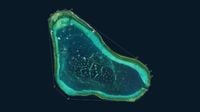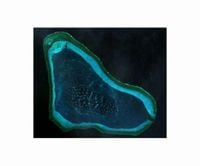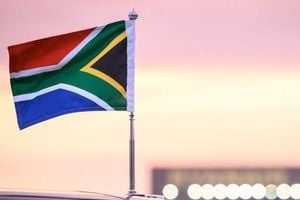On September 11, 2025, tensions between the Philippines and China surged anew as Manila lodged a formal protest against Beijing’s decision to establish a national nature reserve at Scarborough Shoal, a flashpoint in the South China Sea territorial disputes. The move, announced a day earlier by China’s State Council, has drawn sharp rebuke from Philippine officials, who argue that the plan is less about environmental stewardship and more about reinforcing China’s sweeping maritime claims.
Scarborough Shoal—a triangular chain of reefs and rocks also known as Huangyan Island in China and Bajo de Masinloc in the Philippines—has long been a powder keg in the region. It sits within waters claimed by China, the Philippines, Vietnam, Malaysia, Brunei, and Taiwan, and is prized for its rich fisheries, protective lagoon, and proximity to major shipping lanes. Since 2012, China has maintained effective control of the shoal, despite persistent Philippine objections and international legal challenges.
China’s State Council’s approval of the Huangyan Island National Nature Reserve covers an area of 3,523.67 hectares (8,705 acres), according to the National Forestry and Grassland Administration. The stated goal, Beijing says, is to protect the coral reef and ensure the diversity, stability, and sustainability of the local ecosystem. An official statement described the reserve as “an important guarantee for maintaining the diversity, stability and sustainability of the natural ecosystem of Huangyan Island.” The reserve is administratively attached to Sansha, Hainan province, and a map released with the announcement outlined the territory staked out for protection—essentially encompassing the entire northeastern side of the shoal.
But Philippine officials aren’t buying it. The Department of Foreign Affairs in Manila swiftly condemned China’s plan as “illegitimate and unlawful,” arguing it “clearly infringes upon the rights and interests of the Philippines in accordance with international law.” The department said a diplomatic protest was underway, urging China to “respect the sovereignty and jurisdiction of the Philippines over Bajo de Masinloc, refrain from enforcing and immediately withdraw its State Council issuance and comply with its obligations under international law.”
National Security Adviser Eduardo Año minced no words, calling China’s plan “patently illegal” and, in his view, a “clear pretext towards eventual occupation.” Año cited both the United Nations Convention on the Law of the Sea (UNCLOS) and the landmark 2016 international arbitration ruling that invalidated Beijing’s expansive claims in the South China Sea. “It is a clear pretext towards eventual occupation,” Año said, warning that China’s move violates international law and could escalate tensions further.
Manila’s protest is not just a matter of diplomatic formality. The Philippines has long declared that any Chinese construction at Scarborough Shoal would be a red line. Philippine Ambassador to Washington Jose Romualdez, a vocal critic of Beijing’s assertiveness, dismissed China’s environmental rationale as a smokescreen. “It’s obviously another maneuvering move by China to justify their 10-dash line claim,” Romualdez said, referring to the series of dashes China uses on its maps to demarcate its vast territorial assertions.
The 2016 arbitral award, handed down by an international tribunal in The Hague, invalidated China’s so-called “historic rights” over most of the South China Sea. While the ruling did not adjudicate sovereignty over Scarborough Shoal itself, it found that China’s blockade of the area violated international law and affirmed that the shoal is a traditional fishing ground for several nations, including the Philippines and Vietnam. China, however, has steadfastly rejected the ruling and continues to enforce its claims.
China’s Ministry of Foreign Affairs responded to the Philippine protest with familiar rhetoric. Spokesperson Lin Jian declared, “The establishment of a national-level nature reserve on Huangyan Island falls within China’s sovereignty,” adding, “China does not accept the Philippines’ unreasonable accusations and protests, and urges the Philippine side to cease its infringements and provocations.” Lin went further, accusing Manila of hyping the issue and complicating the maritime situation.
Observers and experts are skeptical of China’s environmental motives. Jay Batongbacal, a maritime law expert at the University of the Philippines, characterized the move as a “thinly veiled attempt to tighten Beijing’s claims in the contested waters of the South China Sea.” He warned that the designation could pave the way for more aggressive tactics, such as the arrest of Filipino fishermen, and that by framing its actions as environmental protection, China hopes to dissuade other countries from supporting Philippine activities in the area.
The environmental angle is fraught with irony. Philippine officials, including Año, have accused China of allowing its fishermen to harvest endangered marine species on a large scale, causing massive reef destruction at Scarborough Shoal more than a decade ago. A 2023 report by the Centre for Strategic and International Studies found that China’s construction activities had buried over 4,600 acres of reef across the South China Sea, and giant clam harvesting by Chinese fishermen damaged another 16,353 acres of coral reef. China, for its part, has denied harming marine ecosystems and has accused the Philippines of similar offenses—a claim Manila flatly rejects.
The shoal remains a flashpoint for confrontations. Just last month, a Chinese navy ship collided with a Chinese coast guard vessel while both were attempting to block a Philippine coast guard ship near Scarborough Shoal. It marked the first known collision between Chinese vessels in the area, underscoring the high tensions and risks of escalation. The United States, which has no territorial claims in the South China Sea but is a treaty ally of the Philippines, has conducted freedom-of-navigation operations near Scarborough Shoal and reaffirmed its commitment to defend the Philippines if Filipino forces, ships, or aircraft come under attack in the region.
China’s claims to almost the entire South China Sea, outlined in its nine-dash line (recently updated to a ten-dash line), overlap with the exclusive economic zones of multiple Southeast Asian nations. Beijing has also constructed artificial islands elsewhere in the region, some equipped with missile systems and runways, further heightening concerns about militarization and long-term intentions.
The dispute over Scarborough Shoal is not just about rocks and reefs; it is about sovereignty, resources, and the balance of power in one of the world’s busiest and most strategically vital waterways. With more than $3 trillion in annual ship-borne commerce passing through the South China Sea, the stakes could hardly be higher.
As Manila and Beijing trade diplomatic barbs and maneuver for position, the future of Scarborough Shoal—and the fragile peace of the South China Sea—remains as uncertain as ever. For now, the Philippine protest stands as a clear sign that the battle for these waters is far from over.






